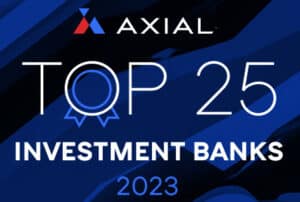
I’ve been doing transactions in the automotive aftermarket since helping America’s Service Station’s private equity owner sell 30 stores in Texas in 2002 to a strategic buyer. Over this time, there are two books that I keep returning to frequently for help in my transactions. The first is Private Capital Markets by Rob Slee (John Wiley & Sons: 2011). I was doing smaller deals from my base in Charlotte North Carolina when I decided I needed a better brand to operate under. Slee also lived in Charlotte and had an Investment Banking firm called Robertson & Foley. So, I called him up and he agreed to let me join him with one requirement – that I read his book. And that’s all it took to become an investment banker.
Private Capital Markets is the first book to present a theory of how the private markets work at the lower end of the middle markets. Slee’s theory of middle market finance is based on empirical evidence, or real world observed activity. In this theory, “owner motives matter” – the owner ultimately determines what transpires. He presents the picture of a ‘three-legged stool’ to describe how Valuation, Capitalization and Business Transfer are inextricably linked.
In the Valuation section, he presents the concept that any business has not just one value but may values that can be expressed in a range of “Value Worlds and Subworlds”. For example, Collateral value is the value as perhaps viewed by an asset-based lender. Market value is the value as viewed by a strategic buyer and Fair Market Value is what is mandated by the IRS for use in ESOPS. Each Value World is described in separate chapters for a full and complete description.
In explaining Capitalization, Slee and Pepperdine University surveyed banks as to what their rates are for various term and line of credit loans; they ask angel investors, family offices, hedge funds and venture capitalists what their target ROI is; they ask mezzanine lenders and factors what their structures are; and they survey large and small private equity investors what they seek in an annualized return. Then, these expected rates of return are consolidated into a “Pepperdine Private Capital Market Line” which shows a business owner where he can reasonably start looking for money and what the various capital sources are looking for.
In Business Transfer, he analyzes all the options on the “Private Business Ownership Transfer Spectrum.” From selling a business to an outside buyer and retiring; selling to management in a management buyout (“MBO”), transferring to family members; doing an ESOP; establishing a charitable trust and even going public. Being an investment banker himself, Slee gives tips on negotiating points, typical deal terms and other practical issues to consider.
The second book I keep referencing is a book on negotiations – Getting More by Stuart Diamond (Crown Business, 2010). Diamond is an internationally recognized negotiation expert and award-winning professor of the very popular negotiation course taught at my alma mater- the Wharton School of Business. I have used Diamond’s approach in many of my transactions over the last decade. In Getting More 12 major strategies describe Diamond’s approach to negotiating. It starts with “Goals are Paramount” and discusses how one never enters a negotiation without having a specific end game in mind. In Diamond’s view, the human element is key, so a negotiation is really “all about them” and understanding the “pictures in their head”. Spend time thinking about what the other party really wants. Furthermore, “every situation is different” so why go into any negotiation with the same old, tired tactics you employ every time?
Diamond ascribes to an incremental approach in negotiating instead of asking for too much all at once. “Take small steps instead of the big steps”, he advises. And “trade things of unequal value” – a small concession to the other party that costs nothing can be traded for a large one that benefits you more. To Diamond, “splitting the difference” is the lazy way out. He advocates that finding their standards and holding them to them is a way of getting more, but cautions one to “be transparent and constructive, not manipulative.” Diamond advises to always communicate and never walk away from a transaction unilaterally. “Framing the vison” helps remind people where they were and where they want to go. Uncovering the real problem the other party faces in a negotiation is the first step towards coming up with a solution and turning it into an opportunity. Just like every negotiation is different, he advises embracing the differences between the negotiating parties instead of ignoring them. And lasty, he advises to prepare in advance – think ahead and make a list of things you want to bring into the negotiations so you can employ them readily as needed. Don’t wing it.
Michael McGregor is a Managing Director at FOCUS Investment Banking (focusbankers.com/tire-and-service) and advises and assists multi-location tire dealers on mergers and acquisitions in the automotive aftermarket. For more information, contact him at [email protected].













